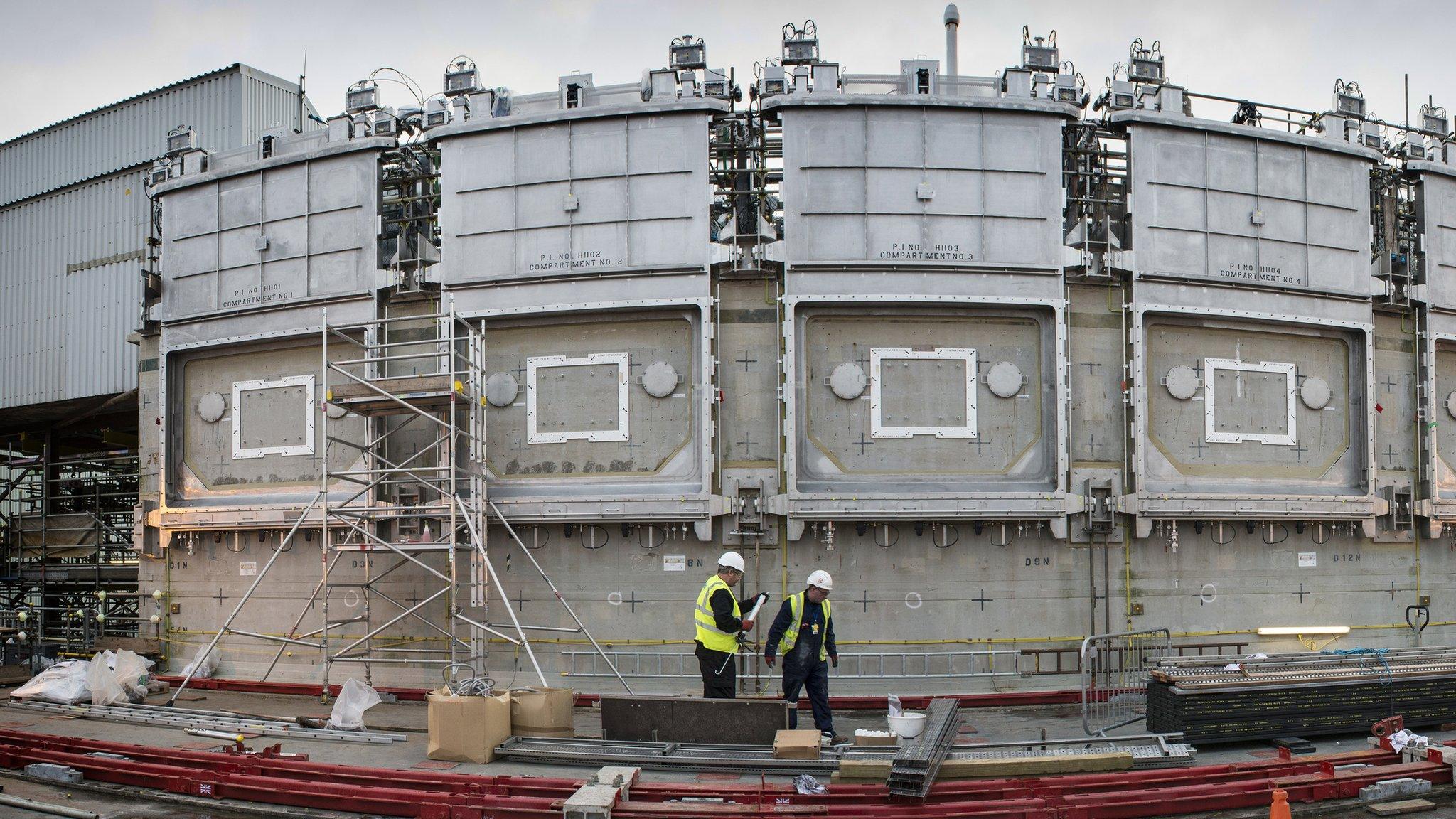Calder Hall: First nuclear power station emptied of fuel
- Published
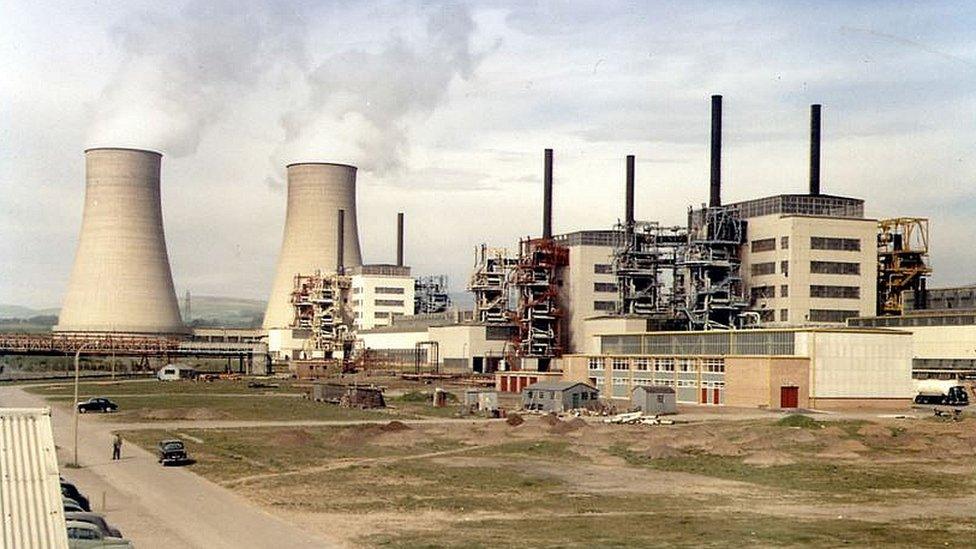
Calder Hall opened in 1956 and generated power for 47 years
The world's first full-scale nuclear power station has been emptied of fuel for the first time since the 1950s.
Calder Hall, at what is now the Sellafield plant in west Cumbria, was opened by the Queen in 1956.
Hailed as the dawn of the atomic age, it produced electricity for 47 years and stopped generating power in 2003.
The Nuclear Decommissioning Authority (NDA) said the news brought the multibillion-pound clean-up operation at Sellafield a major step closer.
When the station was switched on, nearby Workington became the first town in the world to receive heat, light, and power from atomic energy.
Calder Hall's Magnox design was the template for Britain's first generation of nuclear power stations and the technology was exported around the world.
The NDA is overseeing work at the site, which is due to be fully decommissioned in 2120 at a cost of more than £70bn.
Stuart Latham, head of remediation for Sellafield Ltd, said: "This is a truly iconic moment.
"Calder Hall was the birthplace of the civil nuclear industry. It inspired the world and put our site at the forefront of the atomic age.
"Completing the defueling programme is an important moment for Sellafield."
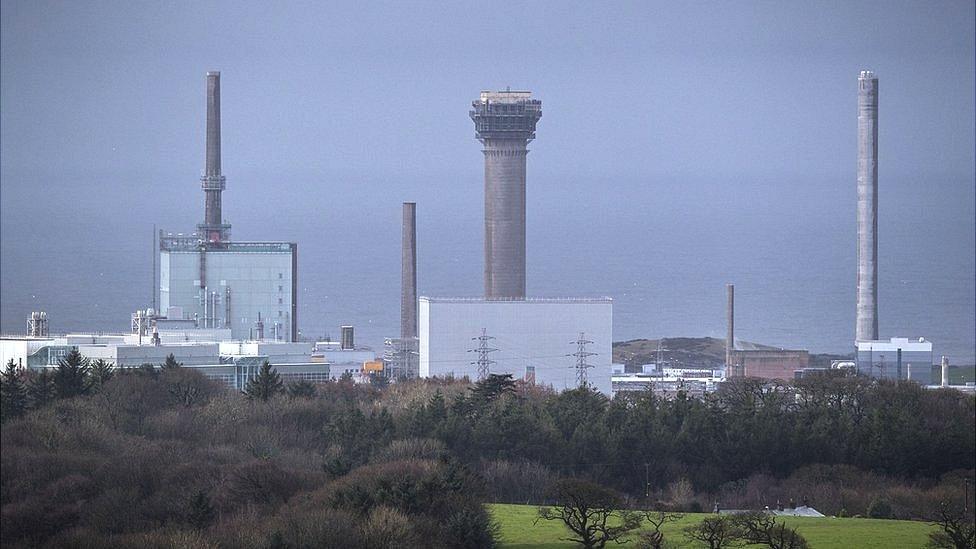
The Sellafield plant is being decommissioned
Removing fuel from Calder Hall's four reactors was a complex task.
A total of 38,953 spent fuel rods had to be retrieved, with the same machines used to load fuel into the reactors during its operational life used to pull it out.
Once removed, the fuel was cooled in a storage pond and any reusable uranium and plutonium reprocessed.
Calder Hall's reactor buildings will now be placed into a state known as "care and maintenance" and fully decommissioned and demolished.
- Published30 June 2018
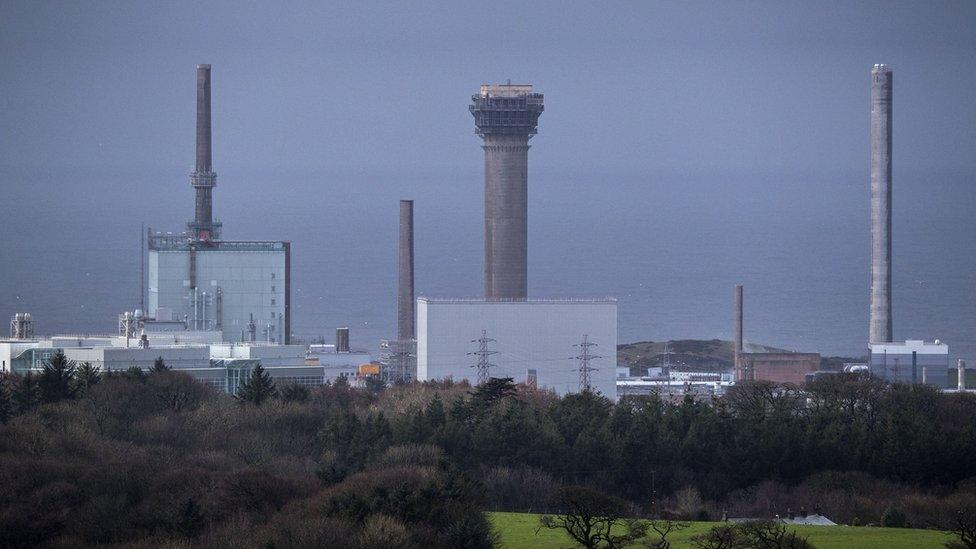
- Published20 June 2018
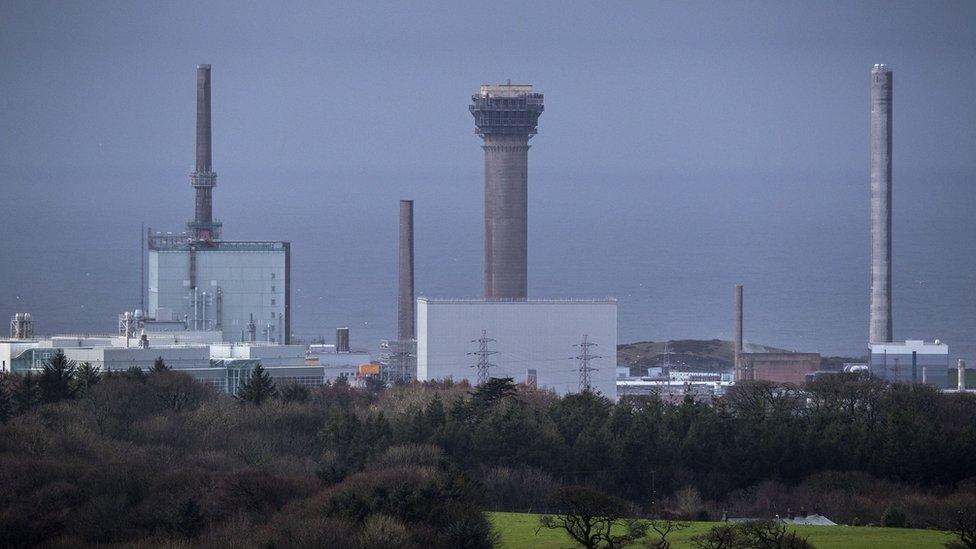
- Published5 September 2017
